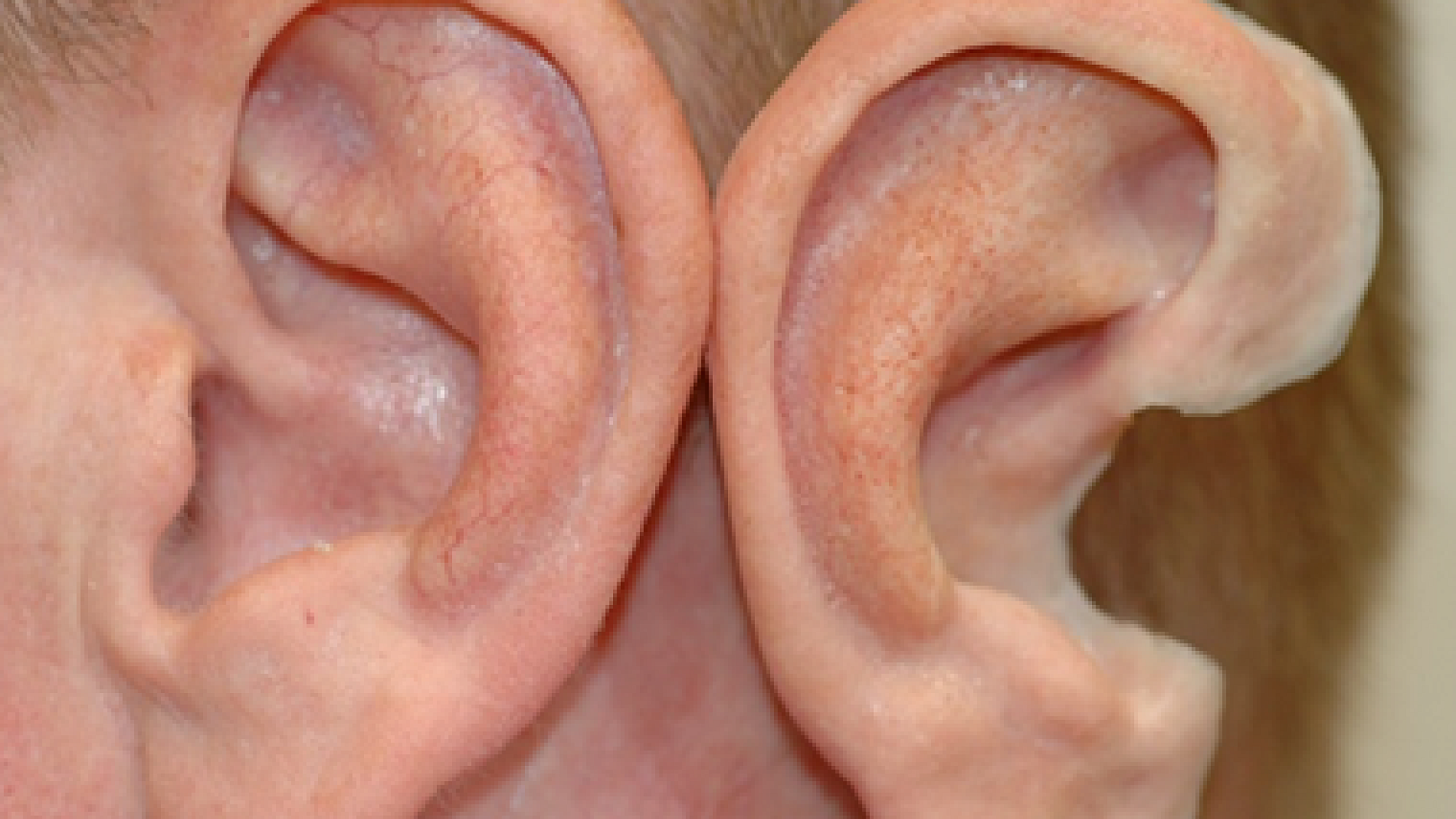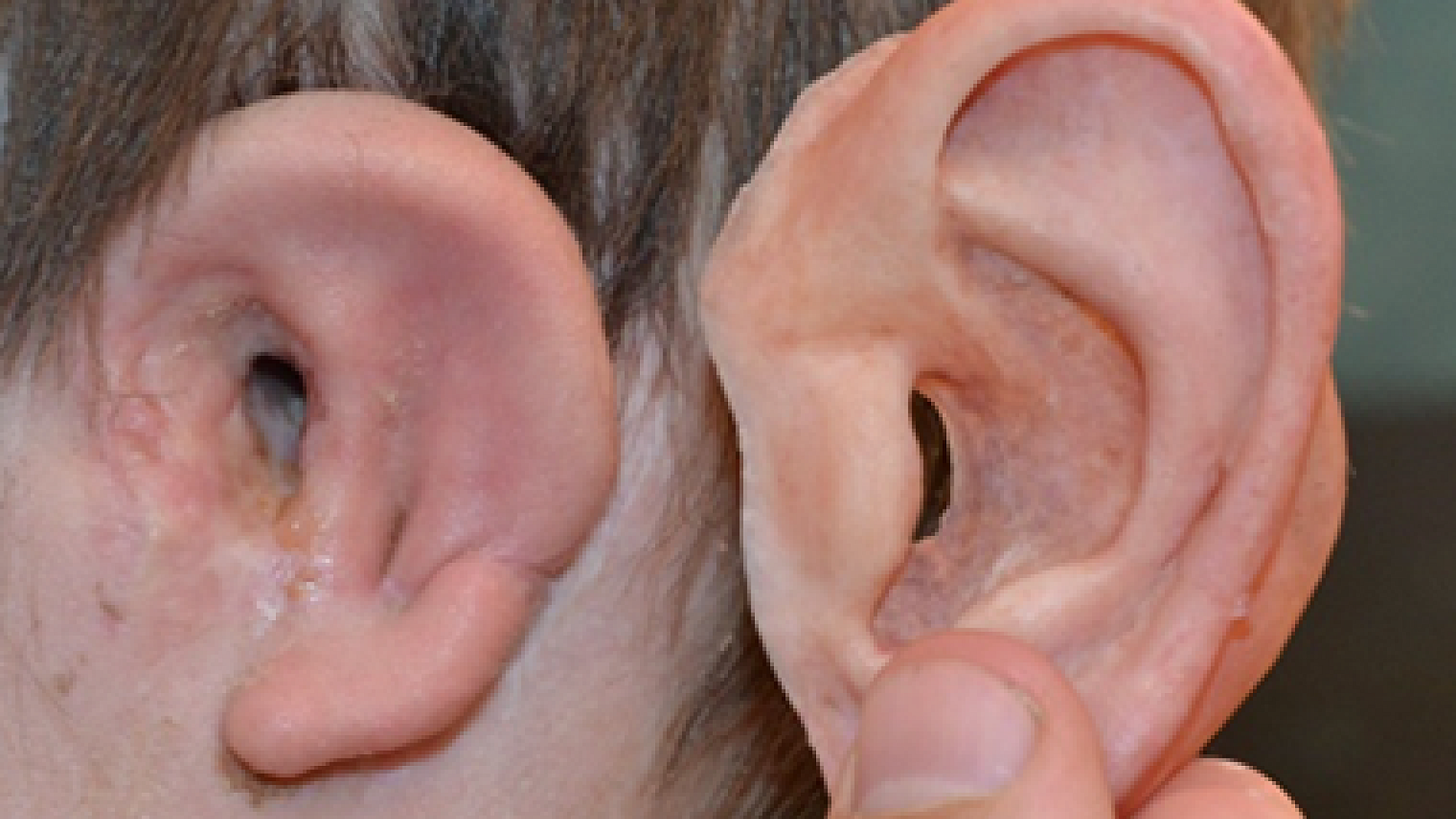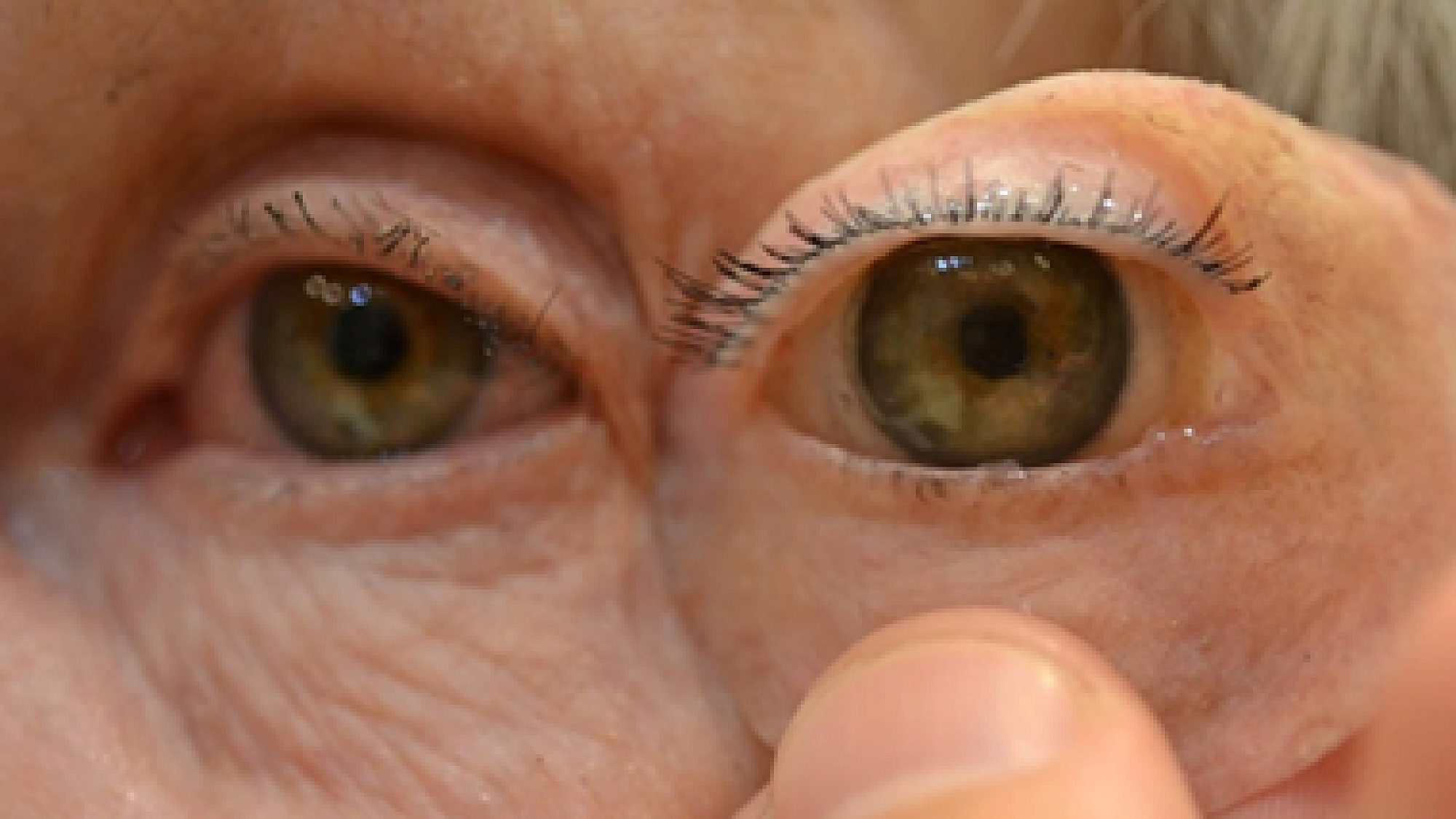
Offering Prosthetics (Artificial Parts) For the Face
Huntsman Cancer Institute Facial Prosthetics creates realistic prosthetics for people who have lost a part of the face due to cancer, other illnesses, or injuries. We also make prosthetics for people born with facial differences, such as microtia.
Often, surgery can rebuild missing parts of the face. But surgery may not be the right choice for everyone. A facial prosthesis takes less time, costs less money, and has fewer health risks.
A facial prosthesis can be helpful in these ways:
- Makes parts of the face changed by cancer look more like they did before
- Brings back the patient’s self-image and self-confidence
- Makes a patient’s facial features work as they did before (called “restoring function”)
About Facial Prosthetics
This is a modal window.
Services
Our trained anaplastologist creates real-looking prosthetics that match each patient's skin color and texture. An anaplastologist is someone who specializes in making prosthetics.
Huntsman Cancer Institute's Facial Prosthetics service uses 3D printing to create the shape of your prosthesis. We meet with you a number of times to make sure the prosthesis fits and looks just like you. The prosthesis can attach to the face using glue, magnets, or other methods. Read more about each type of prosthesis below.
Ear
We custom-make ear prostheses to look the same as your other ear. An ear prosthesis lets you wear glasses or a hearing aid. The prosthesis stays on all day and won't come loose. You can choose whether to attach the prosthesis to your skin with glue or snap it on with implants.
Ear Prosthesis for Microtia
An ear prosthesis can fit over most little ears (microtia). It can also fit over a reconstructed ear you are unhappy with. A well-made prosthesis can look more real than a reconstructed ear. Many parents choose a prosthesis for their child while the child grows up. That way when they are an adult, they can decide themselves whether or not to have surgery. Some parents choose a prosthesis while they wait for new surgery methods such as tissue engineering.
Eye Prosthesis
An orbital prosthesis replaces your eyelids and eye. It goes in your eye socket. The eye does not move or blink. We use a hard plastic to make the eye and soft silicone to make the eyelids. An orbital prosthesis attaches to the skin with glue, snaps, magnets, or glasses. An anaplastologist will help you figure out which method works best for you.
Nose Prosthesis
We make nasal, or nose, prostheses out of thin, flexible silicone. You attach it to your skin every day with glue. We create your nose prosthesis based on photos of your old nose or on a CT scan. The prosthesis's color and texture matches your skin.
A nose prosthesis lets you wear glasses, protects your nasal cavity, and helps keep the inside of your nose moist. Some people choose to get a nose prosthesis until they have reconstructive surgery.
Clinic Visits
We offer new patients a free first visit. During this visit, we answer your questions about insurance coverage, prosthesis options, and the benefits and limitations of prostheses.
If you choose to get a prosthesis, you’ll come back several times so we can fit, design, and finish your prosthesis. Our goal is to make the prosthesis and attachment method that works best for you.
Frequently Asked Questions
Does my insurance cover prostheses?
Nearly all insurance plans will cover the cost of a prosthesis. This includes Medicare and Medicaid. Many plans consider our service as in-network. If your plan’s network has no prosthesis provider, we can often qualify as in-network.
How does a prosthesis stay in place?
Many patients choose to use glue. This type of glue stays secure even during swimming or other sports. Some people use clips or magnets implanted in the bone. Learn more about both methods:
Will I be allergic to the prosthesis glue?
It is very rare to have an allergic reaction to the glue. People with sensitive skin may get some redness or itchiness, but it is minor.
Do I have to have surgery to wear a prosthesis?
Most people don’t need surgery for a prosthesis. But in a few cases, surgery may help get a better result. If the anaplastologist thinks you may need surgery, he will talk about it with you at your consultation.
How do I take care of my prosthesis?
Most people clean the glue off the prosthesis at the end of the day. If you have a prosthesis that clips into place, you need to clean your skin around the implants. You only need soap and water to clean a prosthesis. Read more about caring for your prosthesis:
Will people be able to tell I have a prosthesis?
Most people do not pay close attention to another person’s facial features. It is rare for people to notice a well-made prosthesis. We custom-make the prosthesis to match your skin color and texture as closely as possible.
Will a facial prosthesis fall off?
We design prostheses to stay on all day without falling off.
Can I go swimming or play sports while wearing a prosthesis?
Yes, generally. The prosthesis attaches very strongly and usually does not come off while swimming or playing sports. But there is a chance that water or extreme sweating can cause a glued-on prosthesis to loosen. Some people choose to not wear it so they don’t worry about it. We recommend taking off a prosthesis that clips on when playing contact sports like rugby, football, wrestling, or boxing.
How soon can I have a prosthesis made after I’m done with cancer treatment?
Most patients can have a prosthesis made as soon as they have healed from surgery or radiation therapy. This is usually 4 to 6 weeks.
I had surgery to reconstruct my ear and I’m not satisfied with the results. Can I still get a prosthesis?
You may still be able to wear a prosthesis over your reconstructed ear. The anaplastologist can talk with you at a free consultation to see if a prosthesis is right for you.
How old does a child with microtia have to be to get a prosthesis?
The process usually starts when the child is 4 or 5 years old. Consider addressing the child’s hearing at the same time. Surgery to correct the ear canal should happen first. The surgeon can rotate the little ear into the correct position during the same surgery. If you want surgery for a bone conducted hearing aid, please meet with us before the surgery.
How long does it take to make a prosthesis?
It usually takes about two weeks for people who live nearby. You will visit the clinic every few days. For people who travel from out of town, we schedule the appointments one day apart. This means the prosthesis can be made in as few as three days.
Where can I stay in Salt Lake City if I’m from out of town?
We recommend patients stay at University of Utah Health’s Patient and Family Housing. Patients and their families get affordable rates, free shuttle service to and from Huntsman Cancer Institute, free breakfast, and many other amenities.
Go to Visit Salt Lake to learn about things to do, events, restaurants, and more.
Contact Us
You can call Huntsman Cancer Institute's Facial Prosthetics service at 801-585-0140 or ask your cancer care team to contact us for you.
About Our Anaplastologist

Paul Tanner, MBA, CCA
Since 2002, Paul Tanner, MBA, CCA, has been using a unique blend of art, science, business, and technology to make facial prosthetics for those missing facial parts from cancer or other conditions. Combining 3D printing and conventional techniques, he has helped thousands of people across the United States and in 20 different countries.



